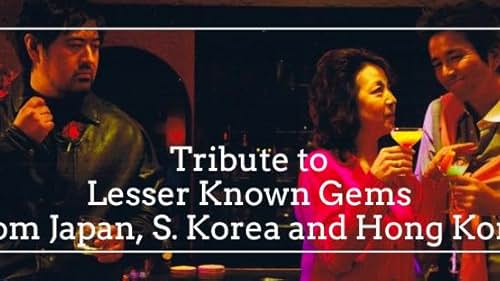
by Mehdi Achouche
Watching “Night River” (also known with the better title of “Undercurrent”), you understand why director Kozaburo Yoshimura (1911-2000) has so often been compared to Kenji Mizoguchi – although that has often been at Yoshimura's expense. Both delivered post-war melodramas often centering on strong, independent-minded female characters being repressed by their families and the social order. Yoshimura (who started as Ozu's assistant director) even took over from Mizoguchi after the latter's death and directed “An Osaka Story” in 1957. The year before, he made “Night River”, penned by feminist screenwriter (and frequent Naruse collaborator) Sumie Tanaka, and adapted from a novel by Hisao Sawano. The story is set in Kyoto and can be seen as part of an informal set of melodramas that Yoshimura directed in the 1950s. These films follow the lives of hard-working women in a rapidly modernizing post-war Kyoto, including the powerful “Clothes of Deception” (1951), “Sisters...
Watching “Night River” (also known with the better title of “Undercurrent”), you understand why director Kozaburo Yoshimura (1911-2000) has so often been compared to Kenji Mizoguchi – although that has often been at Yoshimura's expense. Both delivered post-war melodramas often centering on strong, independent-minded female characters being repressed by their families and the social order. Yoshimura (who started as Ozu's assistant director) even took over from Mizoguchi after the latter's death and directed “An Osaka Story” in 1957. The year before, he made “Night River”, penned by feminist screenwriter (and frequent Naruse collaborator) Sumie Tanaka, and adapted from a novel by Hisao Sawano. The story is set in Kyoto and can be seen as part of an informal set of melodramas that Yoshimura directed in the 1950s. These films follow the lives of hard-working women in a rapidly modernizing post-war Kyoto, including the powerful “Clothes of Deception” (1951), “Sisters...
- 5/15/2024
- by Guest Writer
- AsianMoviePulse
IMDb.com, Inc. takes no responsibility for the content or accuracy of the above news articles, Tweets, or blog posts. This content is published for the entertainment of our users only. The news articles, Tweets, and blog posts do not represent IMDb's opinions nor can we guarantee that the reporting therein is completely factual. Please visit the source responsible for the item in question to report any concerns you may have regarding content or accuracy.
